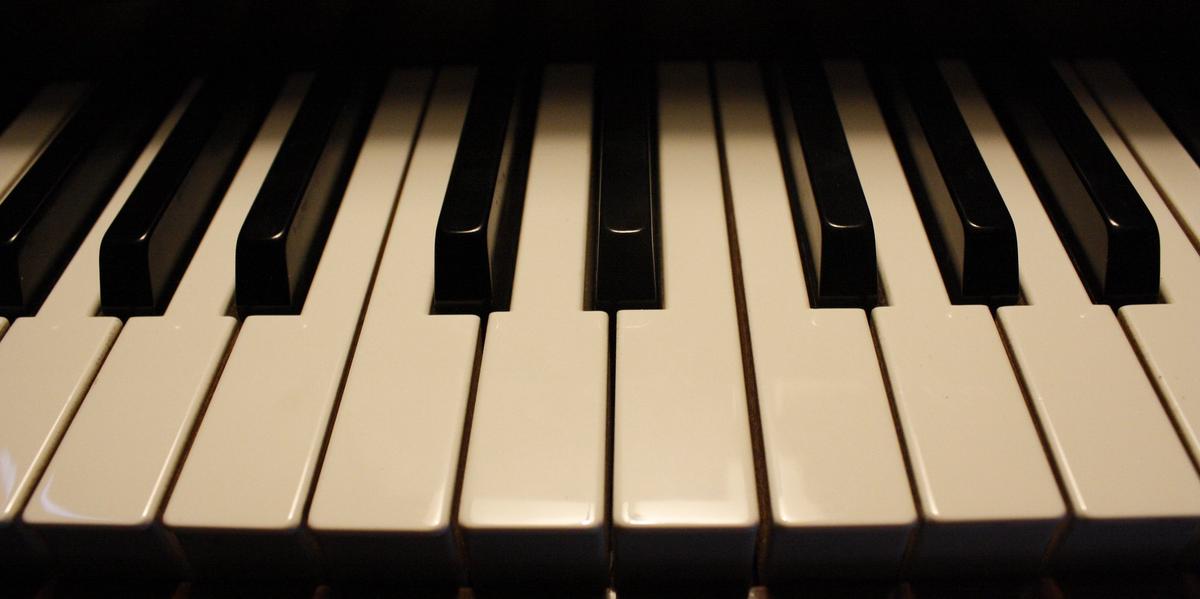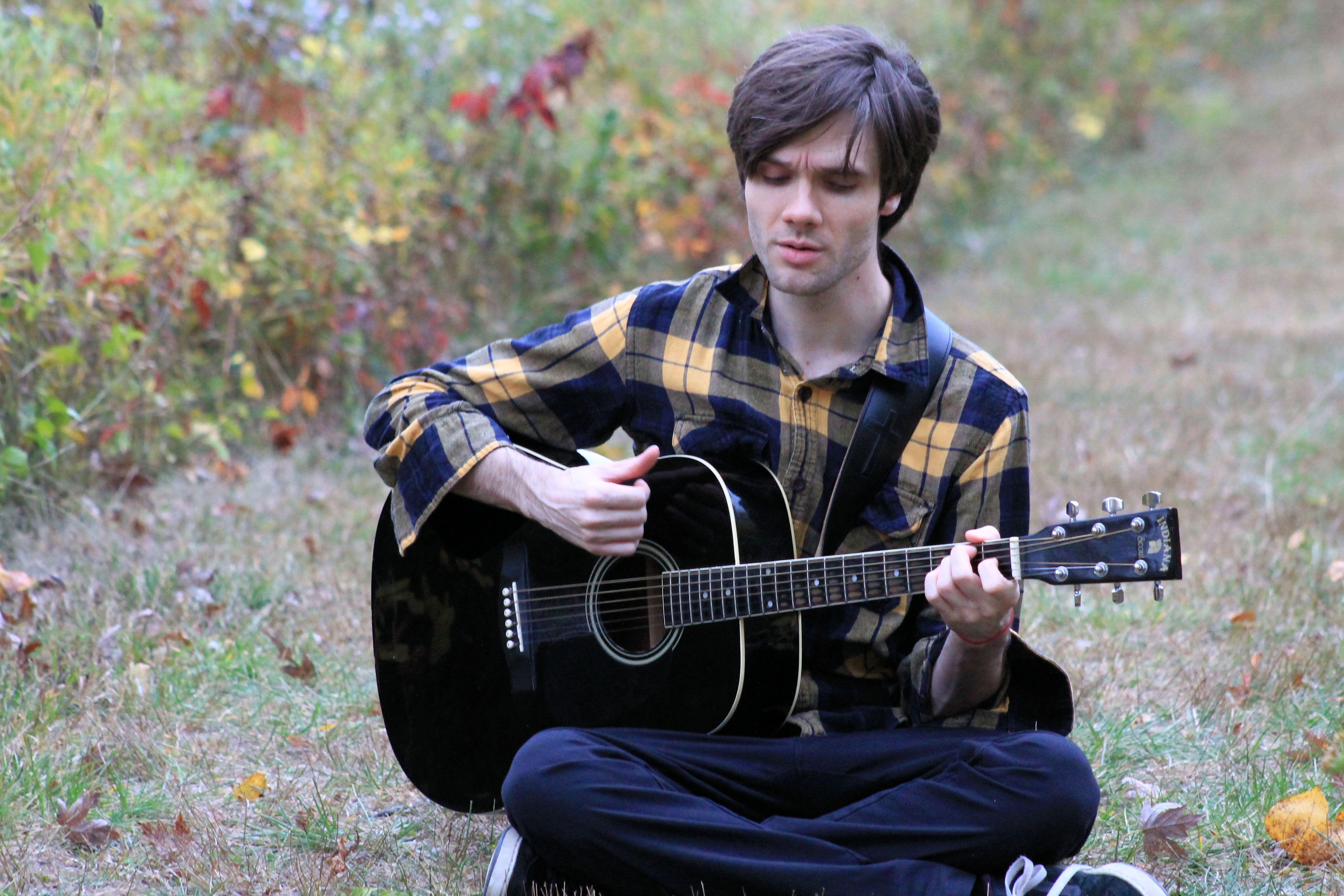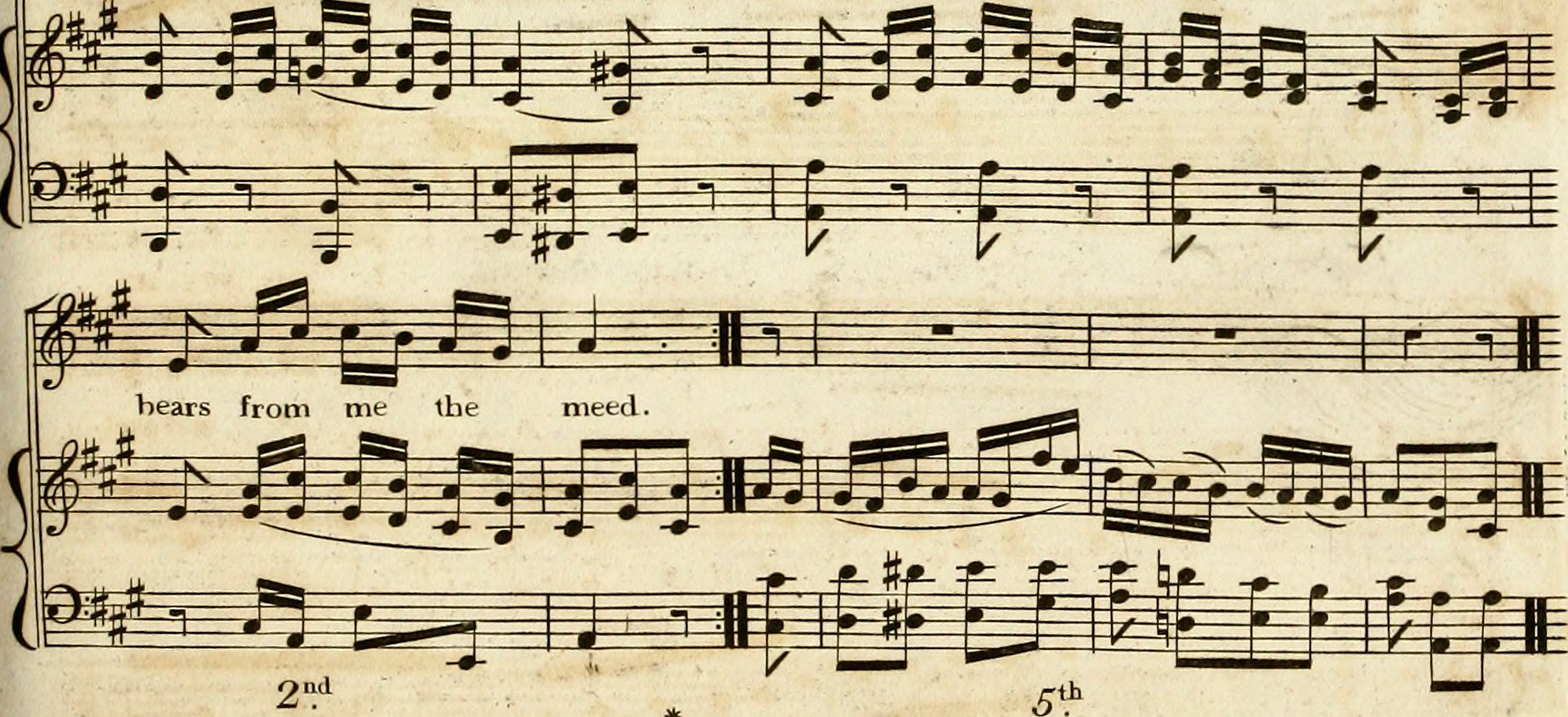What is a Polychord?
A bottle cap clatters on the bar, spinning like a top as the bartender slides the bottle along the counter. The lights in the lounge are low and warm like the conversation in the air. At the back of the room on a small stage, a resounding thump thump cuts across the dining area like a small cannon as the drummer tests his kick drum. The piano player smiles devilishly, and his fingers flit across the keys like a bumble bee through the air – the sound is jagged and tense, over before it’s started. The upright bass player suddenly thwocks out a sound that gives you the sensation of slipping down a slide, and with a start, the conversation halts, the air suddenly filled with sound. The intriguing trio on stage is now commanding all of the attention in the room as they play, and your ears and eyes can’t help but wander over to the piano player and his hands. Whatever you are hearing, it’s not something that you recognize from the radio. The sound is sprawling and mysterious and it makes your stomach flutter. His hands seem to be traveling along two different sets of tracks at the same time; although it seems a little…off, the tension is beautiful and it’s hard to look away. At this moment, you are hearing this jazz pianist evoke a sound and way of thinking that has existed since at least 1911, where it emerged from the world of classical music; you are hearing him play freely in a world of polychords.
What is a polychord?
Good question!
By definition, a polychord is a harmonic device used in music, created by stacking two different triads or seventh chords on top of each other.
Simple enough. A stack of chords. Great.
But what exactly does that mean?
And how does that translate into the sound and feeling of actually experiencing a polychord?
Polytonality
Petrushka
To fully understand what our Jazz pianist is doing up on stage with his polychords, we need to rewind history back to the early twentieth century to a completely different musical era. Here, a Russian composer named Igor Stravinsky was writing a ballet called Petrushka that used a strange and progressive way of thinking about harmony. Famously, he pitted the white keys of the piano – the key of C major – against all of the black keys, simultaneously implying the wildly different key of F# major at the same time.
Stravinsky had his orchestra playing in two different keys at the same time.
Whoa.
This is polytonality, which is officially defined as:
The occurrence of two or more tonalities or keys played concurrently within a musical piece.
But wait, why is this such a big deal?
To unpack this question, we need to look at a few simple examples of music.
The key of C major, shown below, is comprised of all the white keys on the piano, from the note C, up through the musical alphabet to the next C. These notes would be: C D E F G A B and C. Check out this short video to hear how this scale sounds!
Notice how the little digital keyboard highlights each of the white keys as the example plays.
Let’s next look at the key of F#, like Stravinsky used in Petrushka.
The key of F# uses all 5 black keys and two white keys – B and what looks like an F - and is spelled: F# G# A# B C# D# E# and F#.
Let’s listen to F# and watch the digital piano play.
So, now we have witnessed the two separate keys that Stravinsky used in Petrushka, let’s look at a few more examples: First, let’s look at how it would sound if we simply played the two scales – C and F# - together, simultaneously!
Listen to that sweet, sweet harmony. You’ll notice that the C major scale is colored green on the piano and the F# major scale is colored blue.
You also might have noticed that that example sounded pretty terrible, especially if you were hoping for some luscious and flowery harmony. This is definitely not the music you’d want to bring home to your grandmother…
Now, for our last two examples, let’s look at what Igor Stravinsky did with this concept, first in the original excerpt, then with a little commentary from Tantacrul.
Start listening at 8:05!
And now, start watching the next video at 1:35!
Within these two videos, you can see the context in which Stravinsky applied this unconventional approach to harmony – stacking vastly different chords with two different tonal centers - as well as a snapshot of the two chords ringing out.
In a way, it’s not surprising that it took humanity until the turn of the 20th century to start exploring polytonality. Played simply through midi playback on the computer, the sonic result of this polytonality is a bit of a head-scratcher.
Why would anyone in their right mind think it was a good idea to play a bunch of wrong notes together at the same time – notes outside of the key? Of course it sounds bad.
But, as a harmonic device, skillfully applied to a professional orchestra with artistic intent and rhythmic drive, the result of this polytonality is quite striking. For a full and beautiful rendition of Petrushka, check out the video below.
The Right of Spring
On a rainy night in 1913, Igor Stravinsky notoriously emptied out an auditorium in horror with the premier of another one of his pieces, The Rite of Spring, where he had ballet dancers convulsing on stage in a mock pagan ritual. The rhythms were “barbaric,” its tone was “brutal,” and quite frankly, the audience wasn’t quite ready for it yet. However, flash forward a few decades, and the show is one of the best things to happen to ballet.
Within the Right of Spring, we can find another prime example of polytonality, with what scholars have dubbed, the “Rite of Spring Chord.” This famous chord is comprised of an Eb7 and Fb chord, two vastly different chords stacked on top of each other. In the movement called, “Dance of the Adolescents,” the cheeky Igor Stravinsky shocked and mortified his audience, stabbing at the two dissonant chords with ostinato fervor while the child dancers contorted their bodies on stage.
If you are interested in other early examples of polytonality, check out Sergey Prokofiev’s Sarcasms for Piano where he explores an F# minor chord played against Bb minor, or Darius Milhaud’s Saudades do Brasil, written in 1920, where he harmonizes a melody in the key of C major with accompaniment in Ab Major.
Sergey Prokofiev and Darius Milhaud were both heavily influential in the refinement and application of polytonality. In fact, Darius Milhaud, a French composer and contemporary of Stravinsky, was one of the first musicians to analyze polytonality in music. He was also the first to meticulously apply and develop the technique into a polished and sharp compositional tool.
Bitonality
Bitonality, in a classical sense, is a smaller subclassification of polytonality. Whereas polytonality is defined as two or more tonal key centers played simultaneously, bitonality is limited to ONLY TWO keys sounding simultaneously.
Bitonality is always considered polytonality, but polytonality is not limited to bitonality.
Let’s think about that one more time.
Bitonality is always considered polytonality. But polytonality is not limited to bitonality.
It’s possible to write as many overlapping, crunchy, and tense tonal centers as your neoclassical heart and sensibilities desire. Practically, though, it can be difficult to play and more than 2 keys at the same time.
So far, all the examples we have examined have been bitonal examples of polytonality. We have only been exploring two tonal centers played in tandem.
For a side-by-side comparison in the differences between bitonality and polytonality, check out Paul Wilkinson’s video, where he demonstrates Polychords, bitonality, and finally finishes off with a 3 key center polytonal improvisation where he improvises in C, G, and E major at the same time!
Polychords
Those Jazz Cats
After having peered back into the folds of time and visiting our friend Igor Stravinsky and his contemporaries, let’s fast forward in time to experience the implications of these early composers’ groundbreaking work.
Emerging from their escapades in polytonality, the harmonic fruits of Stravinsky, Milhaud, and Prokofiev began to coalesce and percolate into other kinds of music. Now, within the jazz idiom, young composers were studying scores and stealing this way of polytonal thinking, but now recontextualizing its application to suit their own purposes.
In the past, classical composers would often write pieces that were either through-composed, without repeating sections, or specifically arranged with popular musical forms of the day. These pieces were notated so that instrumentalists had only one job: read the dang music and play it right. This firmly arranged and predestined approach to writing and arranging music served as the vehicle for a composer to explore this mysterious concept of polytonality.
But in the jazz idiom, the young and modern composers of the day were taking the music and steering their arrangements in a different direction. Instead of preordaining everything that they wanted to happen in the music, they were building their arrangements around pop melodies of the time, then using the relatively simple musical forms as a launchpad for improvisation. Musicians would take ideas from the main melody of the tune, and rocket out into improvised choruses of music.
A chorus, in this sense, was not just the catchiest part of the song on the radio that we know all the words to; in the jazz tradition, a chorus was something a little different. After the soloist would play the main melody of the tune, the rhythm section would begin to loop the harmon or the chord progression of the song. One full loop of the tune’s chord progression was known as a chorus. Over each of these choruses, instead of playing the melody over and over again, the soloist would start to create new melodic, rhythmic, and harmonic ideas by reinterpreting and remixing the music of the melody in real time.
Very Hip-hop.
It was out of this virtuosic, intensely personal, and shoot-from-the-hip approach to music-making that jazz musicians started to borrow polytonal ideas from their predecessors.
Encountering Triads
Moving forward, it’s important that we have a basic encounter with simple chords. In most of our Western musical tradition, our concept of harmony is based on a kind of three-part harmony, also known as tertian harmony. These tertial, three-part structures are also known as triads.
Basic triad chords are constructed by stacking 3 notes on top of each other. If we look back at the key of C, we can create triads by starting on the note C, skipping D, stacking an E, skipping F, and stacking a G. Following this logic, a C major triad is built using the notes: C E G.
We can build triads for the entire scale, next starting on the note D, skipping E, stacking F, skipping G, and stacking A. The triad starting on D in the key of C major is spelled “D F A” and is called D minor.
If we apply this stacking and skipping approach to all the notes of C major, we will end up with all of the triads in the key, which looks something like this!
Pretty neat huh? This is what the stacked triads of C major sound like:
There is so much more we could say about triads, but now that we have taken a basic look at these simple chords, let’s chart a course back to our topic of interest: polychords.
Polychords in Jazz
So far, we have learned the definition of polychords (stacking two different triads on top of each other) and traced them back to their inception with Stravinsky in Petrushka. It was here with Petrushka that the world encountered one of the first examples of polytonality (Two or more key centers or tonalities occurring simultaneously in a musical piece). Then, we examined bitonality (ONLY two different keys played simultaneously) before setting our sights onto those spunky jazz musicians who started using polytonal concepts as an approach to improvising.
In the tradition of jazz, musicians started using this idea of stacking triads or seventh chords (triads with an extra 3rd stacked on top) in order to achieve exotic and colorful sounds in their improvisation. Famous among these musicians was Bill Evans. For more information about Bill Evans and his harmonic approach, check out the video below!
Bill Evans often used this idea of stacking chords to achieve lush harmony in his improvisation, allowing his right hand chords to create poignant and complex streams of sound on top of his left hand. He freely borrowed chords from any key that he wanted, precisely stacking wildly different chords on top of each other, always with the specific intention to create deeper and deeper layers of tension and release in his improvisation.
Dave Brubeck
Another famous example of polytonality’s application in Jazz can be traced back to Dave Brubeck, who was a pianist and composer born in 1920. Dave Brubeck studied music at the College of the Pacific in Stockton, California, and later in his life, he studied with Darius Milhaud, the French composer we mentioned earlier. Remember that it was Milhaud who fundamentally analyzed and deeply refined polytonal playing. Under the guidance of Milhaud, Brubeck investigated musical fugues, orchestration, polytonality, and polychords.
Chris Brubeck, Dave’s brother, writes of the dreamy harmonic tension that Dave could achieve in his improvisation. Chris describes how his brother would often start playing a tune and its melody in the original key. When Dave started to improvise, he would let his right hand start playing in a new key, often a sixth higher, as his left hand stayed rooted in the original key.
In an interview with Brubeck himself, he recounts a performance where he surprised himself with his playing - not in the moment, mind you. It was after the show when a fan approached him with a tape recorder, pointing out that he had been playing in both the key of C and the key of Eb, each hand playing a different key.
Brubeck was shocked, he couldn’t believe he had done that, and he didn’t really understand how he had done it either. Of course, he studied meticulously with Darius Milhaud, but in the interview, Dave shares that he would often immediately forget what he had just played when he finished improvising. His creativity was a momentary gift, lost to the ether, and usually never considered again.
Sweet Harmony
The energy of the night has waned, and the jazz trio on stage is now playing an aching instrumental ballad. As you watch the piano player’s hands at the keyboard, you can see that he is stacking chords on top of each other. But as the drums swing low and the bass cries mournfully into the night, the simple recognition of the piano player’s polychordal improvisation can hardly speak to the heart of what you feel. The music washes over you in waves as you gaze dumbly towards the musician. He is bent over, head nearly touching the piano, eyes closed as his fingers weave microscopic stories in sound.
Suddenly, you feel it. You know this moment has been coming all night. This is the end. The lights dim, and holding your breath, you feel the sound slow to a crawl and swell in volume; and as if struck by a ghost, your flesh prickles with goosebumps as one final sprawling wall of sound gasps from the open piano – somehow both joyful, mournful, yet full of love. After a moment of deafening silence, the room erupts in applause, but the musicians have already left the stage.




